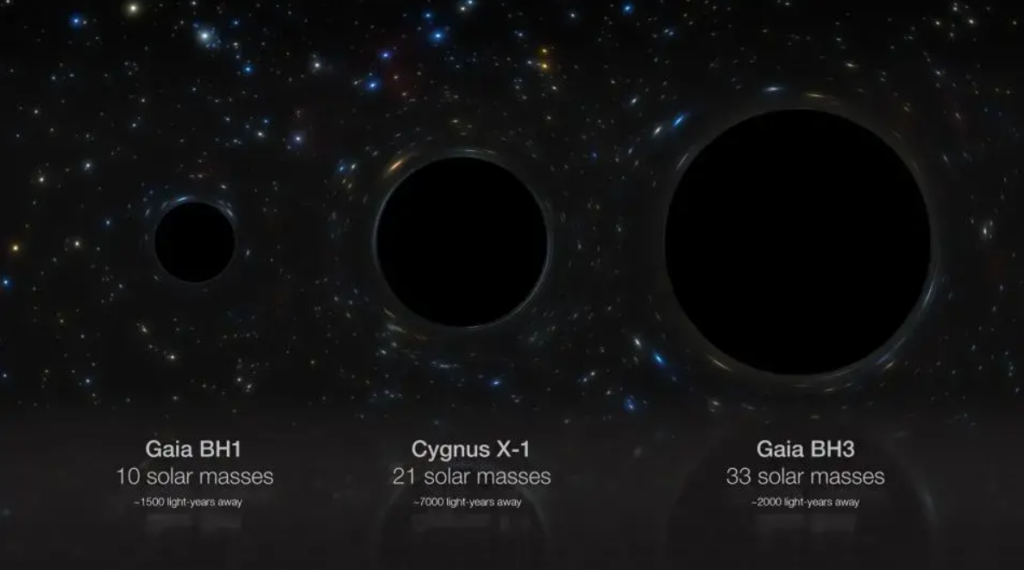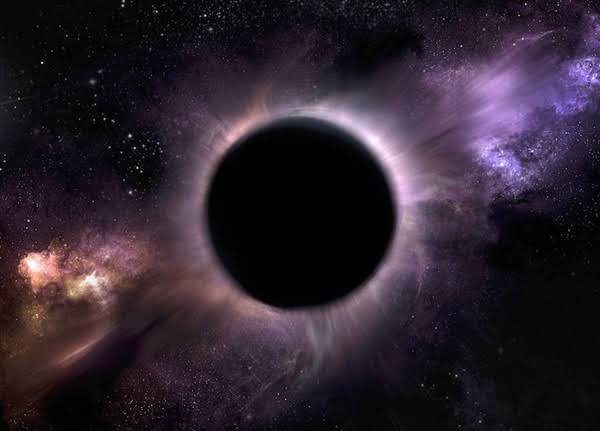Astronomers have recently made a significant discovery within our own Milky Way galaxy. They have identified a stellar black hole that is the most massive one known to date. This remarkable finding was made when astronomers observed an unusual movement in the surrounding space.
This enormous black hole, named Gaia BH3, has a mass that is approximately 33 times greater than that of our sun. It is located about 1,926 light-years away in the Aquila constellation. Gaia BH3 is the second-closest black hole to Earth, with Gaia BH1 being the closest, situated around 1,500 light-years away. Gaia BH1 has a mass nearly ten times that of our sun.
The detection of Gaia BH3 was made during the analysis of data collected by the Gaia space telescope, which is operated by the European Space Agency. Initially, the researchers were not expecting to come across such a significant finding. However, they noticed a peculiar motion caused by Gaia BH3’s gravitational pull on a nearby companion, which immediately captured their attention.
The detection of a mature giant star in the Aquila constellation unveiled its orbital interaction with a dormant black hole, marking the third such finding by Gaia.
To verify the mass of Gaia BH3, scientists employed the European Southern Observatory’s Very Large Telescope and other ground-based observatories in Chile’s Atacama Desert. Furthermore, their research shed light on the origin of these massive black holes. These results were detailed in the journal Astronomy & Astrophysics.
Principal investigator Pasquale Panuzzo, an astronomer at the Observatoire de Paris, expressed astonishment at the revelation, remarking, “The presence of a high-mass black hole nearby, previously unnoticed, was unexpected. This is the type of breakthrough that occurs once in a researcher’s career.”
Supermassive black holes like Sagittarius A* in the center of the Milky Way, which exceed Gaia BH3’s mass by millions of times, have a formation process that is not well understood. While supermassive black holes are believed to form from the collapse of massive cosmic clouds, stellar black holes are created from the deaths of massive stars. Gaia BH3, therefore, stands out as the most massive stellar black hole in the galaxy, originating from the demise of a massive star.
Prior to the discovery of Gaia BH3, Cygnus X-1 was known as the largest stellar black hole in the Milky Way, boasting a mass 21 times that of the sun. Gaia BH3’s mass places it in the league of objects found in distant galaxies, underscoring its importance.

Scientists suggest that Gaia BH3, a stellar black hole, is formed through the collapse of metal-poor stars that are primarily composed of hydrogen and helium. These stars experience minimal mass loss during their lifespan, resulting in an excess of material during the collapse process. This surplus material potentially leads to the creation of high-mass black holes.
The discovery of Gaia BH3 is particularly significant as it provides direct evidence linking high-mass black holes with metal-poor stars. This connection is confirmed by the metal-poor composition of the star that orbits Gaia BH3.
The orbit of the accompanying star of Gaia BH3 indicates that it formed within the first 2 billion years after the universe’s creation. Interestingly, its trajectory is contrary to that of many stars in the Milky Way’s galactic disk. This suggests that the star originated from a small galaxy that merged with the Milky Way over 8 billion years ago.
The research team expects that their findings will enable other astronomers to conduct further studies on Gaia BH3, unraveling more of its mysteries before the complete release of Gaia data in late 2025.
Carole Mundell, the director of science at the European Space Agency, commended the impact of Gaia on astronomy, stating, “It is remarkable to witness the transformative influence that Gaia is having on the field of astronomy and astrophysics. Its discoveries are extending far beyond the mission’s original objective of creating an incredibly precise multi-dimensional map of over a billion stars in our Milky Way.”
Do not forget to share your opinion with us to provide you with the best posts !




0 Comments